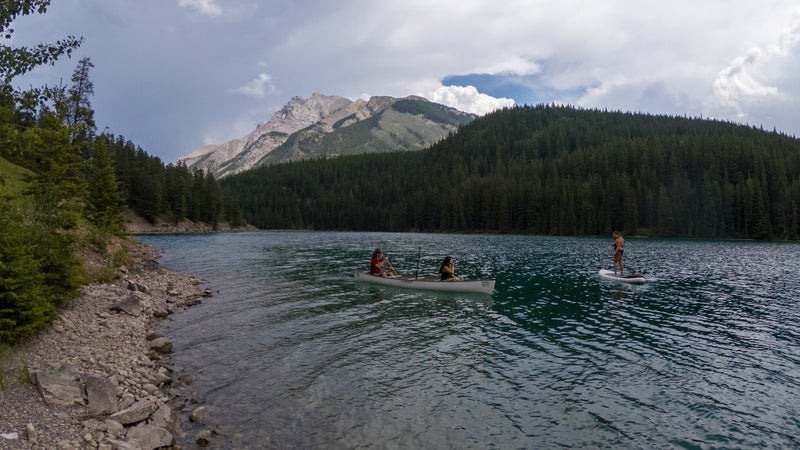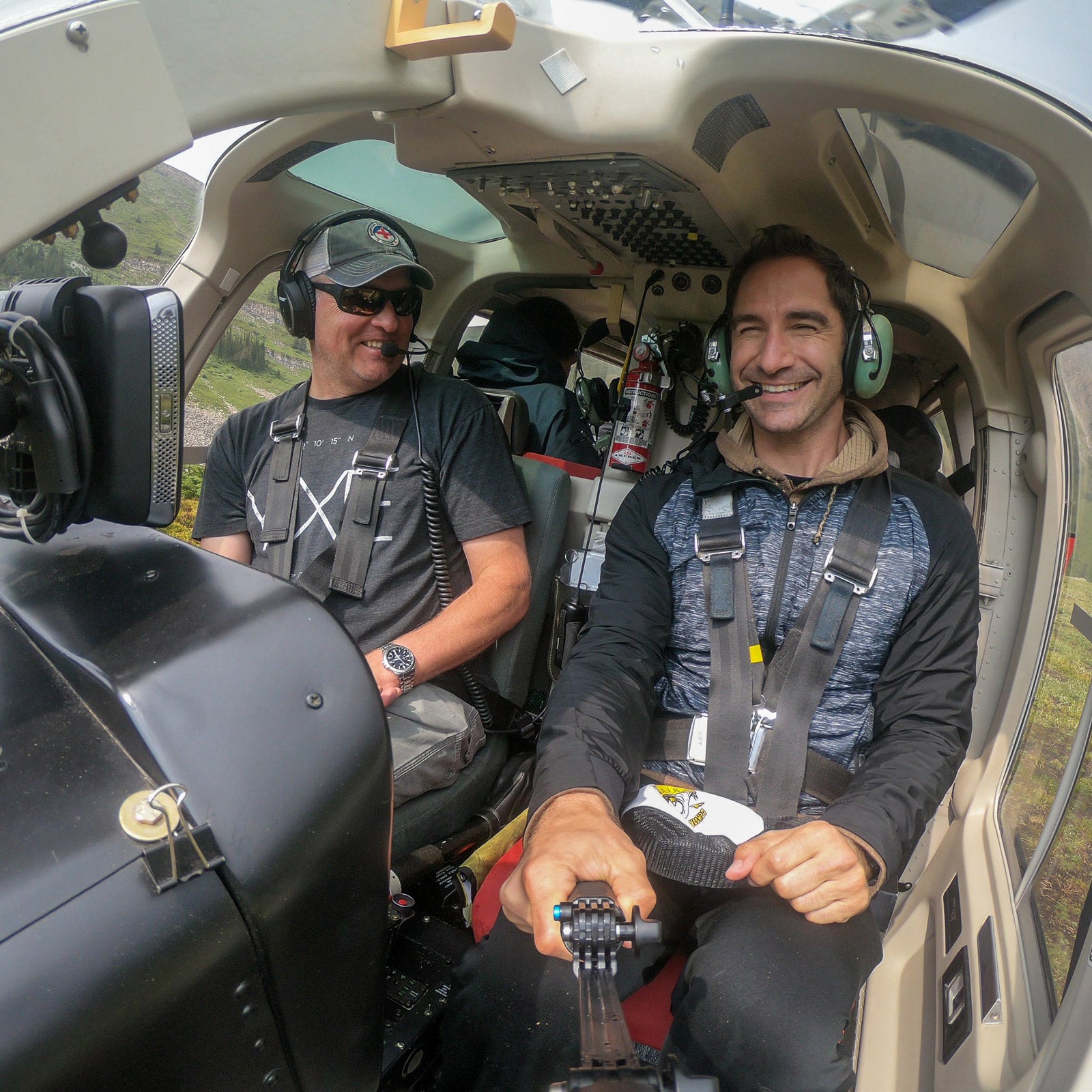Over the summer, I attended the first GoPro Creator Summit, in Banff, Canada. It was a collection of 50 high-profile content creators in the GoPro FamilyÔÇöÔÇöand then me, the lone journalist and the person with by far the smallest social-media following of anybody attending. Could this event boost my stats?
I went into the summit with just over on Instagram, which isnÔÇÖt bad for a freelance writer, but it certainly doesnÔÇÖt qualify me as a tastemaker, trendsetter, influencer, what have you. IÔÇÖll freely admit, though, that sometimes I look at the photos or videos of someone with a massive following and think, Come on! My stuff is at least as good as that, isnÔÇÖt it?┬áWell┬ámaybe they know something I donÔÇÖt. My goal for the week was to learn the tricks of the trade, both from GoProÔÇÖs social-media team and some of the big-time influencers┬áin attendance, and see how many new followers I could garner.
Pro Tips
The two-day summit featured two classes each morning and adventures like mountain biking, wake surfing, and rafting each afternoon. The activities gave people a chance to generate content, but they also afforded me the opportunity to hobnob with a lot of the influencers to pick up some of their tips and tricks. Most of the best info came from the classes, though.
Given my focus for this article, I opted to sit in on Leveraging GoPro to Build Your BrandÔÇöled by attendees and travel bloggers and ÔÇöand Building Your Social Audience with GoPro, taught by Katie Marylander, GoProÔÇÖs senior social media manager, and Mike Maholias, GoProÔÇÖs global social media manager.
Here are the tips I gleaned from the two workshops as well as talking to the various influencers at the summit, which I then later put to use in an attempt to make myself Insta-famous.
Practice Timing
Nearly every influencer I spoke with┬ásaid that one post a day was their maximum. They donÔÇÖt want to inundate their audiences with too much stuff, but also, itÔÇÖs not easy to come up with new, quality content to post all the time. Atanmo┬ásaid she wants to catch her followers┬áwhen theyÔÇÖre┬ámost likely to be active and engaging: when they wake up, when theyÔÇÖre on lunch break, or around dinner. For this, the Insights feature on Instagram is important,┬áshowing you where most of your audience is and when people are┬ámost likely to be scrolling.
Respond to Engagement
Everybody emphasized the importance of interacting heavily in the first hour after you post something to your main feed, with the first half-hour being the most critical. If somebody comments, comment back. InstagramÔÇÖs algorithm is looking for posts that are generating a lot of discussion. So┬áif you respond to every comment, thatÔÇÖs twice the comments you would have, which makes the algorithm think that this is something people might want to see and discuss, thereby putting┬áit in more peopleÔÇÖs feeds.
Know Your Audience
According to Marylander, people scroll through 300 feet of content a day. ThatÔÇÖs dragging your thumb from end zone to end zone on a football field. ÔÇťYou have to have content that thumb-stops them,ÔÇŁ she said. What that means, exactly, will depend on your audience. If most of your followers know you as a mountain biker and are tuning in for that, a beautiful sunset may not generate as much of a response.
I found another trend in the feeds of those I met at this event: shameless┬áself-promotion.┬áI picked seven of these┬áinfluencers┬áat random and analyzed their 50 most recent posts. I found that, in 82 percent of those posts, the creators prominently featured themselves, including┬áone person who was prominent┬á48 times in 50 posts, one who was in 49 of 50 posts, and another who was in all┬á50 posts. ItÔÇÖs worth noting here that this, too, depends on your audience. I follow┬áa lot of landscape photographers who have┬áhuge followings, and they never post shots of themselves.

Hone Your Content
One of the attendees, YouTuber , told me that with travel photos, anyone can go to the same lake and get the same shot, and you probably canÔÇÖt compete with the professional photographers from national magazines, so┬áthatÔÇÖs why your unique perspective is important. ÔÇťWhy am I watching you tell the story? What is it about your experience thatÔÇÖs different?ÔÇŁ she asks. To this end, Encheva┬áincludes┬áplenty┬áof personal thoughts┬áand stories about┬áthe experiences behind her photos in┬álengthy captions.
For GoProÔÇÖs , Maholias┬ámust pick┬áa still image that will be┬áhighlighted on the companyÔÇÖs Instagram feed (with its 14.6 million followers). Things that catch his eye: scenes that are fully natural or fully urban, not a mix (i.e., not a stunning landscape with power lines and a few cars),┬ávibrant colors and action,┬áand a subject or element to add┬áscale. In addition to purely epic stunts, heÔÇÖs looking for humor and happiness┬á(such as kids and pets)┬áand ÔÇťlandscapes that make viewers want to buy a plane ticket.ÔÇŁ And then there are things to avoid, like feeding or disturbing wild animals, trespassing, and breaking the law with a drone.
Limit Video Lengths
GoPro says that cutting the fat and keeping videos short (30 seconds or less) is best for both Instagram and Facebook. In fact, Marylander said that they get eight times more engagement on videos that are six seconds or less. People will watch┬áthose multiple times, which makes the view count go up, which makes Instagram and Facebook think itÔÇÖs really good,┬átricking┬átheir algorithms into bumping you up in other peoplesÔÇÖ feeds so it gets in front of even more eyeballs. Also key when considering video content:┬áa strong finish, with something that gets the viewerÔÇÖs heart pounding right at the end; that tends to┬áboost┬áthe chance that people will┬ácomment.
Putting It into Practice
I did my best to act on all this newfound information. It seems like being active in the comments during the first hour really does help. After a week or so, though, I found myself losing patience. I didnÔÇÖt like responding to something that didnÔÇÖt inspire a genuine reaction (like a bunch of emojis), and forcing it felt a bit craven. I started feeling beholden to keep up with the comments.
I also did my best to keep my stories active and post things that my audience might engage with. Asking questions helps, certainly. Referencing my most recent post in my story seemed to help push viewers over to my main feed to check it out.
Other things I just couldnÔÇÖt come around to, at least not yet. While the seven influencers I analyzed┬áaveraged 41 photos or videos of themselves out of every 50 posts, I realized I only featured myself in┬ásix out of 50 posts before my┬átrip to Banff. Whoops. In the time since, however, IÔÇÖve tried posting more shots with myself in them, but this still feels a bit forced. I donÔÇÖt mind it when itÔÇÖs natural, or when itÔÇÖs a shot IÔÇÖm excited about, but I mostly travel alone and shoot handheld. IÔÇÖm rarely going to dig out my tripod just so I can take a picture of myself. Mostly I just want to post what I want to post, which brings me to my next struggle point: consistency.
Looking at the feeds of the influencers I met, I noticed┬áthemes running through their photos, be it┬ácolors or types of shots. One person seemed to be going through a blue period (a modern-day Picasso), while another was enamored with the reds in sunsets. Looking at my own profile, itÔÇÖs a jumbled mess, ugly, jarring, disjointed. But thatÔÇÖs me. Sometimes IÔÇÖm taking shots of beautiful landscapes, sometimes IÔÇÖm on a bike or a snowboard, sometimes IÔÇÖm snapping┬á, sometimes IÔÇÖm , and sometimes I capture┬á. I know this hurts my viewership, but itÔÇÖs authentically me. At least itÔÇÖs honest. If that hurts my numbers, so be it.
The other big struggle┬áfor me┬áis shooting vertical video specifically for Instagram. I get that itÔÇÖs more comfortable to hold your phone that way,┬áand it looks great in stories and such. But hereÔÇÖs the thing: as a filmmaker, you often only get to shoot something once. Are you going to shoot it vertically, which will only look┬ágood on phones, or are you going to shoot horizontally┬á(the way human eyeballs are oriented) so it can also be viewed on TVs, computers, and movie screens, and look good everywhere?
The Upshot
Semantics aside, GoPro was not able to make me an influencer in three days.┬áOr, really, I wasnÔÇÖt able to make myself into one. I started the event with 5,196 followers┬áand had 5,237 by the end of it. A net gain of 41 isnÔÇÖt bad, but itÔÇÖs hardly a sudden rush of influence. Then again, here I am, four months later, with over 6,100 followers, so maybe that consistency paid off in the long run. But ultimately, I didnÔÇÖt care. IÔÇÖm going to share the moments from my life that I want to, the causes that are important to me, and the things that make me laugh, whether they look good on a grid or not.


